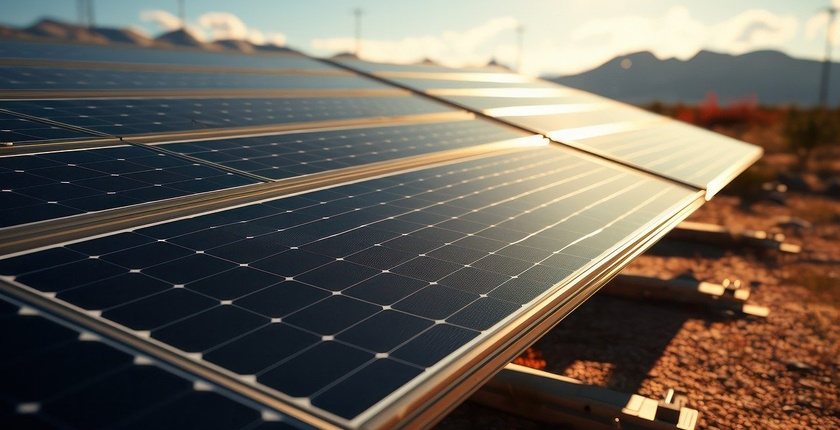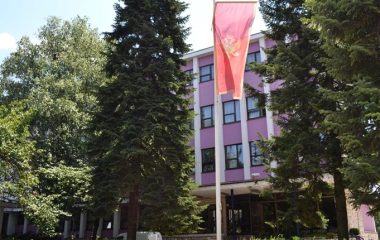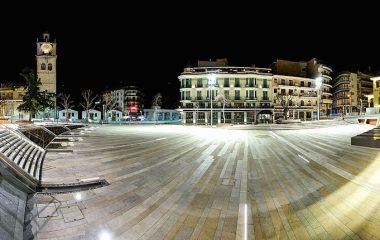
Photo: Franz Bachinger from Pixabay
A study is underway for a photovoltaic park of up to 50 MW in capacity with storage in the Green Line area, separating the Cypriot Greek and Turkish communities since 1964. The idea is for the facility to be run jointly.
The European Commission approved EUR 325,000 from its aid program for the Turkish Cypriot community for a study for a bicommunal solar park. The project is managed by the United Nations Development Programme (UNDP), which said the document would be produced by a German contractor, but failed to name it.
Experts appointed by each Cypriot community will also participate in the study for the photovoltaic unit, with an estimated capacity of 30 MW to 50 MW, according to the announcement. The aim is to foster cooperation between the two communities of the island, while supporting the objectives of the European Green Deal and building a more integrated and sustainable electricity system in the island country.
Furthermore, the solar power plant is set to be built in the UN Buffer Zone in Cyprus, also known as the Green Line. Restricted for access, essentially a no man’s land, its first version was set up in 1964 to contain ethnic violence.
No inter-Cypriot political deal on solar plant yet
The study will assess the technical, regulatory, environmental, economic, and financial aspects of the project. It will identify suitable locations in the buffer zone and explore the most promising technical options, including energy storage capacity, UNDP said. The results are expected to be finalized before the end of the year.
The study is expected to be completed by the end of the year
The idea for a solar park in the 178-kilometer stretch of land emerged last year in Nicosia. The Turkish Republic of Northern Cyprus, an entity only recognized by Turkey, later responded with a suggestion for bicommunal hydrocarbon, electricity, renewable energy and water projects. However, there was no inter-Cypriot political breakthrough on the matter.
EU reportedly scolds Cyprus over delays in project for power link with Greece, Israel
Of note, the ethnic Greek–dominated Republic of Cyprus is struggling with electricity grid stability due to the expansion of solar power capacities. It is still the European Union’s only non-interconnected member state. It is working on the EuroAsia Interconnector with Israel and Greece, while the northern administration is planning to link its grid to Turkey, also through an undersea cable.
Cyprus could lose the EU’s massive grant for the EuroAsia Interconnector if it doesn’t speed up the procedure
According to domestic news outlets, EU authorities have warned Cyprus to get the interconnection project back on track or even risk losing a EUR 657 million grant. Among other issues, the selected contractors are still waiting for final deals.
Domestic grid is craving for storage systems
Recent official reports showed that the country is wasting 20% of its solar power on an annual basis due to grid overload at times of low demand and high solar irradiation. Minister of Energy, Commerce and Industry George Papanastasiou promised to accelerate the response, including an incentives plan for investments in energy storage.
In other news, developers of two utility-scale solar power projects including battery storage have submitted environmental impact assessment studies. One is for a photovoltaic plant of 72 MW photovoltaic park. It would have a 41 MW battery system with a capacity of 82 MWh, which means it can provide electricity at full power for two hours.
The project, the largest of the kind in the country, was launched by AGM Lightpower and its affiliate AGM Solar Power. It is scheduled for completion in 2028. The site is near the villages of Akaki and Kokkinotrimithia in the Nicosia province.
The other endeavor is for a solar power plant with a battery capacity of 32 MWh. Evergreen Energy intends to invest EUR 32 million in the facility, which would be located in Alektora near Limassol.









Be the first one to comment on this article.